Hey there this is @prakhar9675 this side and this is a homework task which is published for professor @yohan2on. So let's answer all the questions asked by the professor.

Who are Super Representatives, SR partners and SR candidates? (The Governance of the TRON Ecosystem)
To understand super representative at first we need to understand the concept of Delegated proof of stake or commonly known as DPoS
DPoS is a consensus which is being used by many leading blockchain DPoS was launched in 2014 by Dan Larimer which is used for increasing scalability and energy efficiency as in this no energy is wasted for solving complex mathematical equations. Currently this consensus is being used by steem, hive, tron and many other blockchains.
The use of DPoS give the blockchain very democratic way of governance and increases the decentralisation as anyone from anywhere can can be a delegate who are selected by voting.
As per the rules defined by DPoS consensus:-
Every stake holders in proportion with the coin holding are given votes which are used for voting these delegates who add blocks to the blockchain. One can delegate it's voting power to another who can vote for delegates on one's behalf.
The number of delegates is also defined by the consensus rule which can vary from 21 to 101.
Now in different blockchains, these delegates are known by different names in different blockchains and the number of these delegates varies from blockchain to blockchain.
For example, in steem blockchain these delegates are known as witnesses and the number of witnesses is 21 and on the other hand, in tron block blockchain delegates are known as super representatives and the number of super representatives is 27. Similarly in EOS blockchain, these are known as block producers

The Governance of the TRON Ecosystem
We have already discussed that in tron ecosystem, DPoS consensus is used which makes it enable to produce upto 2000 blocks per second and also gives it a very decentralised governance.
Now when we talk about governance of tron ecosystem, there are mainly two types of block producers:- super representatives and super representatives partners which are abbreviated as SR and SRP
As per the rules defined by the consensus, anyone from anywhere can apply for these roles and anyone having staked tron can vote for their respective producer for these roles.
The number of votes or the voting power of a voter depends upon the staked tron which means that unstaked tron doesn't count for voting power.
As we discussed that in tron blockchain the number of super representatives is 27, this means that the top 27 people having most votes will be assumed to have a role of super representatives and people having ranks from 28 to 127 are called super representatives partners and people having ranks downward 128 are called super representative candidates
Now let's talk about super representatives, super representative partners and super representative candidates extensively.

Super Representatives
Super representatives are the one having rank between 1 to 27 in the block producers list. Super representatives are the main block producers of the tron blockchain. Super representatives produce a block every 3 second and for producing a block, these are rewarded with 16 TRX. Super representatives have a committee which can propose new proposals regarding transaction fees, fees for creating an account and rewards.
Thus we can say super representatives have a very crucial role in tron ecosystem. Now let's understand how these are voted.
In tron blockchain, anyone having staked tron in his account gets tron power which is abbreviated as TP which is based on the TRX staked. More TP means more influence in tron blockchain and over this election
Now anyone can vote for its favourite block producers or one can simply delegate one's TP power to anyone else who can vote on one's behalf.
Votes are counted after every 6 hours and this way there are 4 counting in a day. And top 27 block producers having most votes will be assumed to have a role of super representatives.
You can see list of all super representatives here

Super representative Partners:-
Block producers who fail to secure rank upto 27 in block producers list but secure the rank between 28 to 127 are called super representative partners.
Super representative partners are also play crucial role as they also can propose all the proposal similar to super representative.
But unlike super representatives, super representative partners do not get reward for mining blocks. They are rewarded with vote reward. And we will discuss it what it is.
A list of all super representative partners can be find by clicking on this link and scrolling down a little.
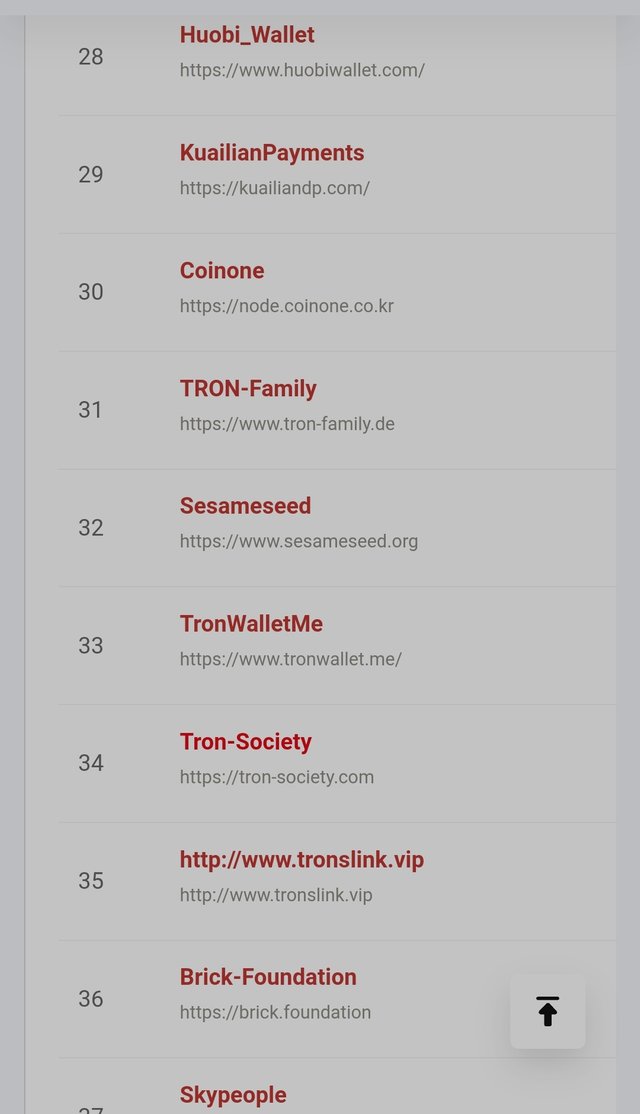
some super representative partners

Super Representative Candidate
Those block producers who couldn't make it to rank upto 127 are called super representative candidates. These are called so because these had participated in the election but couldn't win and thus are called candidates. Anyone can be a super representative candidate but these don't get any reward from block generation and can't propose any proposal as described earlier.
Now to let only those participate in the election who are really interested in this process, 9999 TRX are burnt at the time when a user becomes a Super Representative candidate. This also helps in preventing attacks or spamming.

Rewards
Let's understand in tron blockchain how rewards are distributed among super representatives and super representative partners and voters. These rewards are only gained by SR and SRP not to super representative candidates.
The mathematical formula used for distributing rewards is the following:-
| Total reward = vote reward× brokerage + block reward× brokerage |
|---|
Now as discussed block reward is not given thus the latter factor become null and void in case of reward for super representative partners.
Also brokerage or voting sharing ratio varies from SR to SR. Some SRs give 100% reward to its voters while some of them distribute just 80%.
Now let's assume, voting sharing ratio is X % then:-
| the share of a voter in that reward = SR reward× sharing ratio × (voter's vote/ total votes of the SR) |
|---|
Now let's understand how vote reward and block reward are determined.
| Vote reward= (TRX/block) × ( block / election) × (election/ day) |
|---|
Now, as a new block is created every 3 second and election is held every 6 hours so (block / election) ratio will be:-
6×60×60/3= 7200
And in a day, there are 24 hours and 6 hours gap between elections, thus in a day there will be 4 election so:-
| Vote reward= 160×7200×4 = 46,08,000 TRX/day |
|---|
Now this vote reward will be distributed among all representatives on the basis of votes
| Vote reward gained by a SR and SRP= 46,08,000 × (votes gained/ total votes) |
|---|
| Block reward= (TRX reward/ block) × (blocks/election)×(election/day) |
|---|
Now as discussed, this reward is paid only to super representatives not to super representative partners. Thus this is 0 for super representative partners
Block reward= 16×7200×4 = 4,60,800
This total reward is distributed among all super representatives equally.
| Total block reward to a super representative = 4,60,800/27 TRX/day |
|---|
Thus from the above mathematical formulas, we can determine vote reward, block reward explicitly. And from there we can conclude total reward that is to be given to a SR or SRP and then on the basis of the voting sharing ratio, we can calculate reward that is to be sent to SR or SRP and that is to be distributed among its voters.

What’s the difference between DPOS and POS consensus mechanisms?
To differentiate between DPoS and POS consensus, at first let's understand these two extensively.
Proof of stake consensus:- As in proof of work, a lot of energy is wasted in order to solve complex mathematical equations and this process is also slow. Thus in order to minimise this energy waste and to make validation faster, proof of stake was founded.
In this, users are required to stake their tokens and then algorithm of this consensus automatically choose a account from all those accounts to validate the transactions.
This choice of account by the algorithm is not completely random. It depends on the time for which user has staked the tokens, amount of tokens staked and many more factors which usually favours those users who have a tremendous amount of tokens and have staked those for a long period. This is one of the bigg flaw of this consensus that it favours these users and this also led to centralisation as users having much stake are likely to validate the transactions.
Another flaw in this is that user who has staked tokens itself has to validate the blocks as delegation are not supported.
This is a flaw in the case when I want to stake my tokens but don't want to validate the transactions. In that case I have to send my tokens to the person whom I want to validate the transactions in my behalf.
DPoS consensus mechanism:- While remembering the flaws in proof of stake, DPoS consensus was founded which aimed to solve all those flaws. This also lead to decentralisation as in this users stake their tokens and get voting powers which is used to vote block producers. And anyone from anywhere is eligible for this role provided that one is having votes and is authorised to do so by a number of users by voting for him.
In this those delegates also can make proposal for many changes into the platform.
The one of the biggest features of this consensus is that by using it the speed of validation can be increased by manifolds. And validation can be done in seconds.

Difference Between Proof of Stake and Delegated Proof of Stake
Now as we have discussed the basics of POS and DPoS, now we can understand the difference between the two easily.
So the difference between POS and DPoS are mentioned below:-
| Proof of stake | DPoS |
|---|---|
| Validation process is slow | validation process is very fast |
| Users who have staked tokens can validate the transactions | users can vote for delegates who will validate the transactions |
| Users having large amount of token staked are more likely to get chance to validate blocks | In this delegates having most votes validates blocks |
| This eventually lead to centralisation and hoarding of tokens | this lead to decentralisation and democracy |
| Stakers also remain in the process even when they are not contributing anything | Delegates who do not work properly can be voted out by voters |

Write a Step by Step tutorial showcasing how to stake/freeze TRX and vote for SRs
Now we have discussed what is DPoS, how it works. Now in this section we will do a practical how to stake TRX and can vote for super representatives.
Votes can be casted only when you have tron power. So first of all we have to acquire some tron energy.

To acquire tron power:-
First of all go to tronlink wallet. And go to discover section and search for tron scan and click on it.
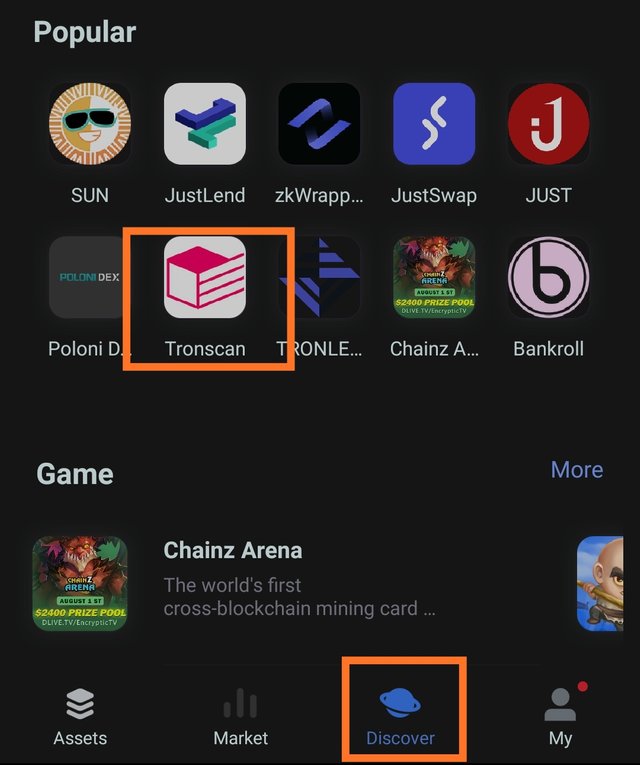
It will either ask you to connect your wallet or you wallet will be connected automatically. In my case it didn't ask me to do.
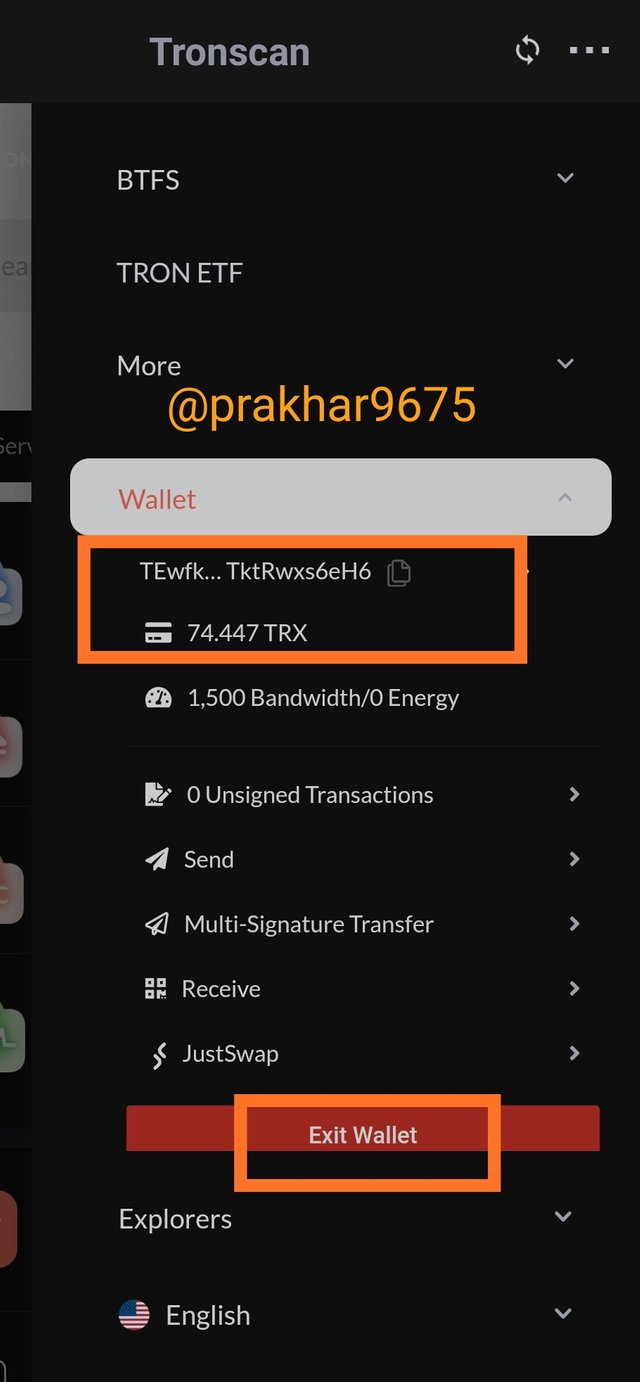
To check whether your wallet is connected or not and your desired Wallet is connected, click on three horizontal line and scroll down a little bit. There you can see you private key and total balance.
Now click on the section where it is showing you your private key. It will lead you to a page where all information regarding your wallet will be mentioned.
There you can see your available bandwidth, energy and also see your tron power
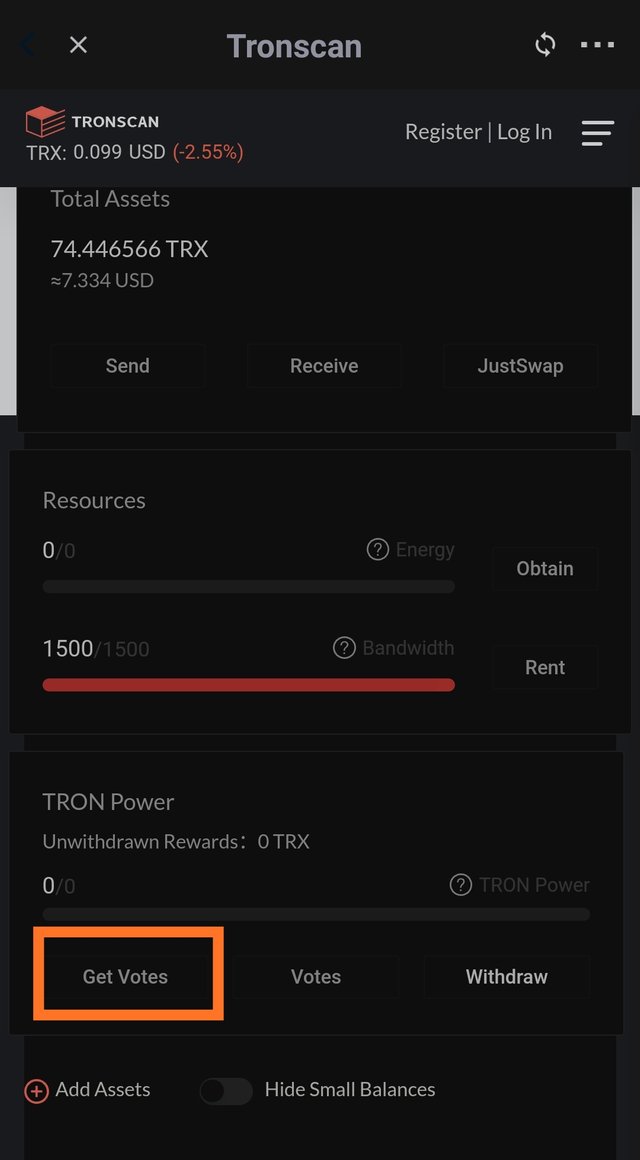
Now click on get votes to get tron power.
Now it will ask you the amount you want to stake. And what you want to obtain from this stake along with tron power bandwidth or energy. I clicked on tron power and bandwidth
Also tick on terms and conditions and click on stake
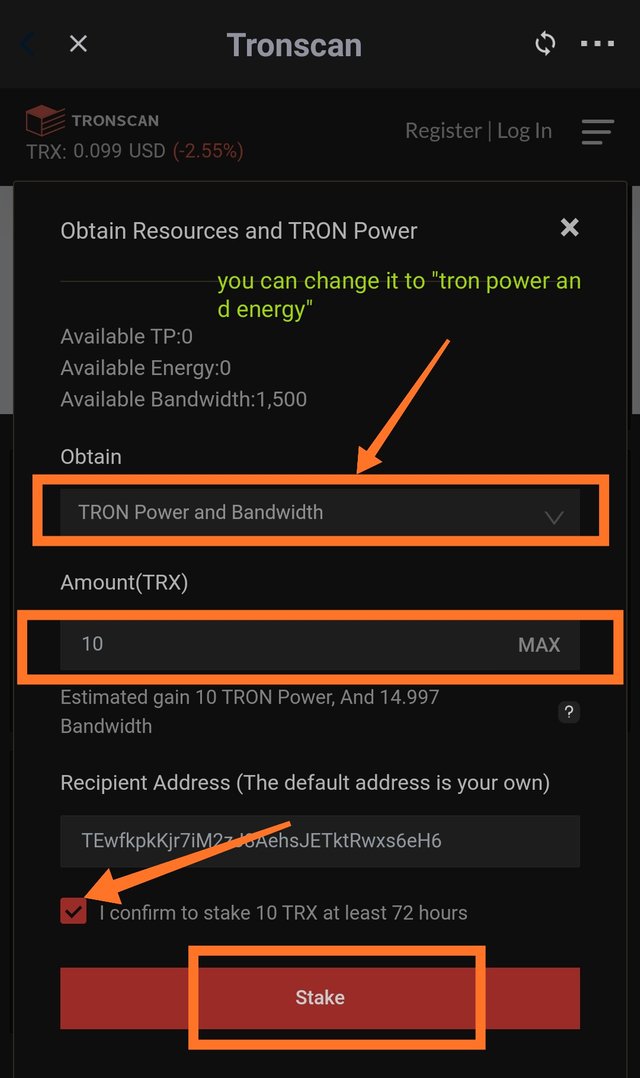
Now it will ask you to choose method to confirm this transaction. You can choose any of the two. I clicked on fast mode
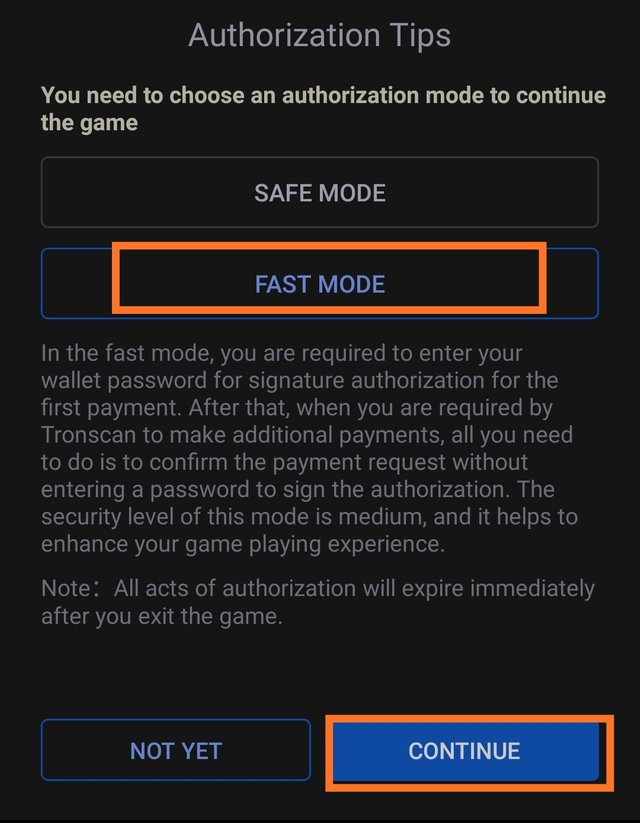
Now it will ask you to confirm the transaction by clicking on confirm
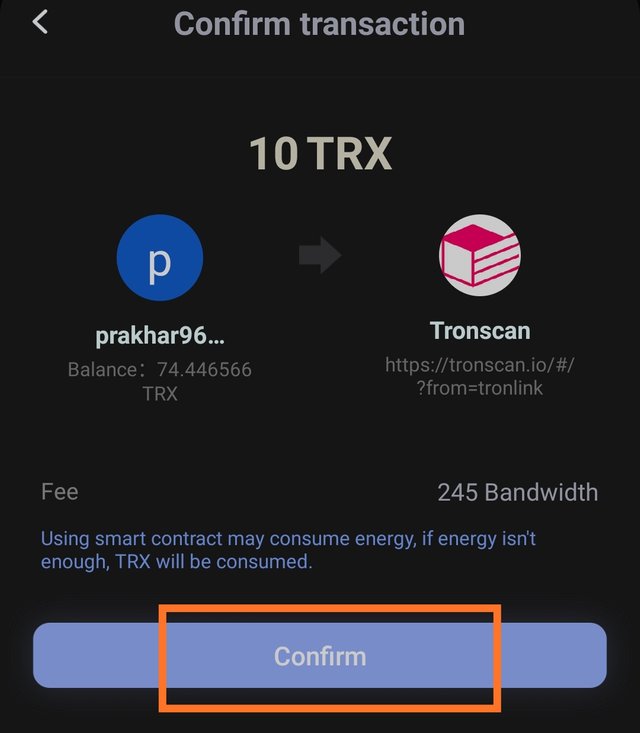
Enter your password to give your assent.
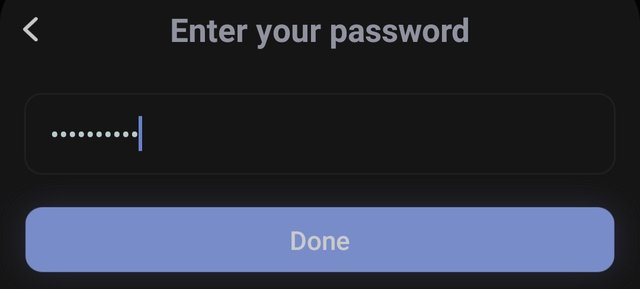
Now you TRX will be staked for atleast 72 hours. And you will get equivalent tron power which is 10 tron power in my case.
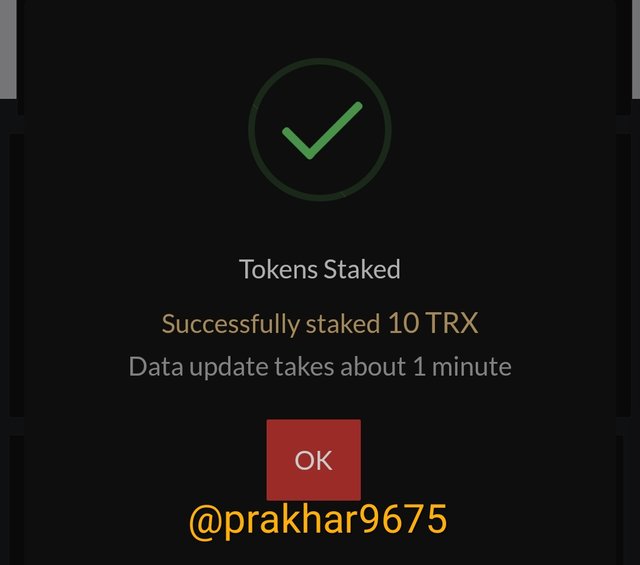
This is how you can stake your TRX and can earn or acquire some tron power to cast vote.
Now on the homepage you can see your remaining bandwidth and also your tron power (total and remaining)
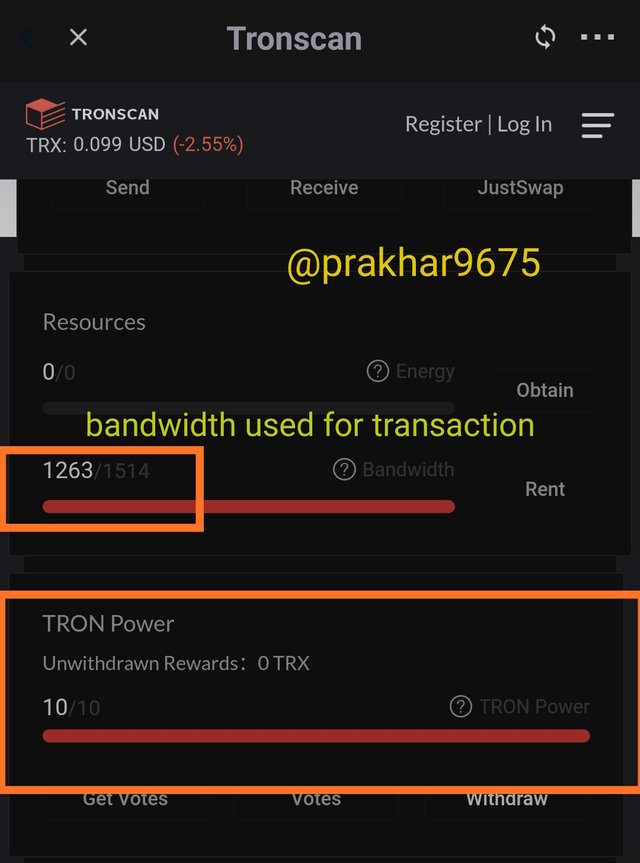

Now to cast your vote
Click on votes beside get votes option.

Now click on voting and a list of all super representatives will be shown. You can cast your vote accordingly.
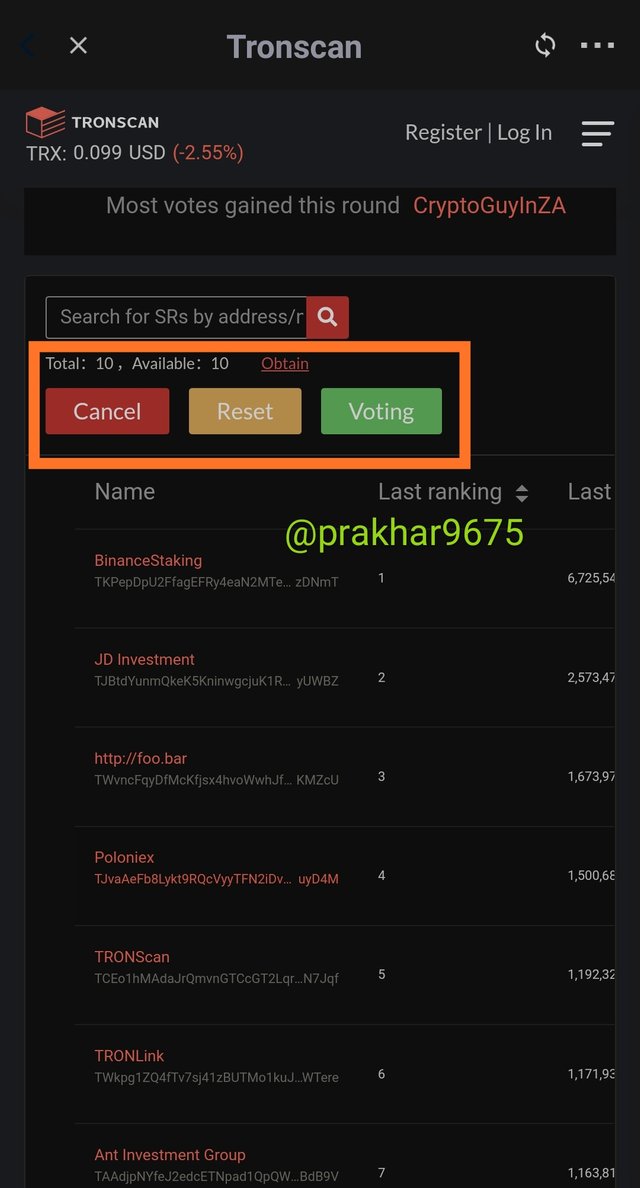
Now you can cast your vote accordingly. For example I have 10 votes, 5 of them I casted to first SR that is Binance staking and 5 I casted to 2nd SR that is JD investment. And then click on voting to confirm.
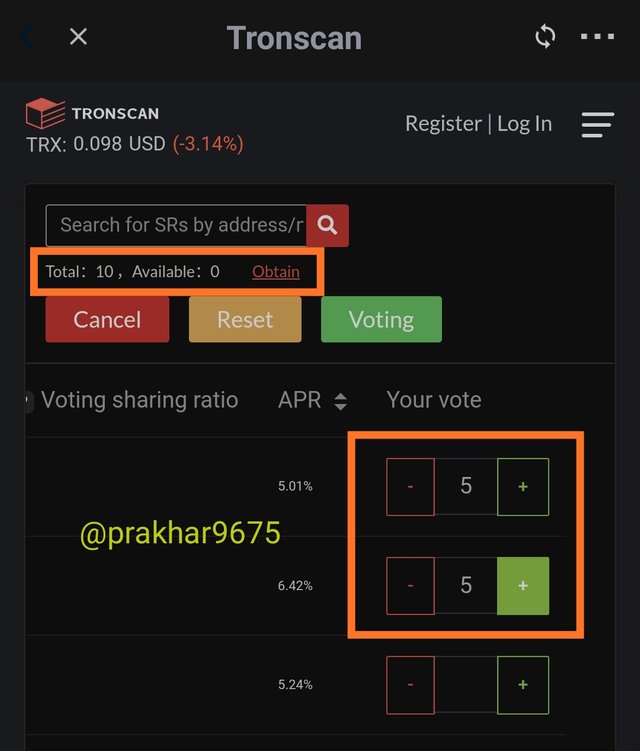
Now as I don't have enough energy to complete this action. I will need to burn my TRX to complete this action. Confirm this transaction to proceed.
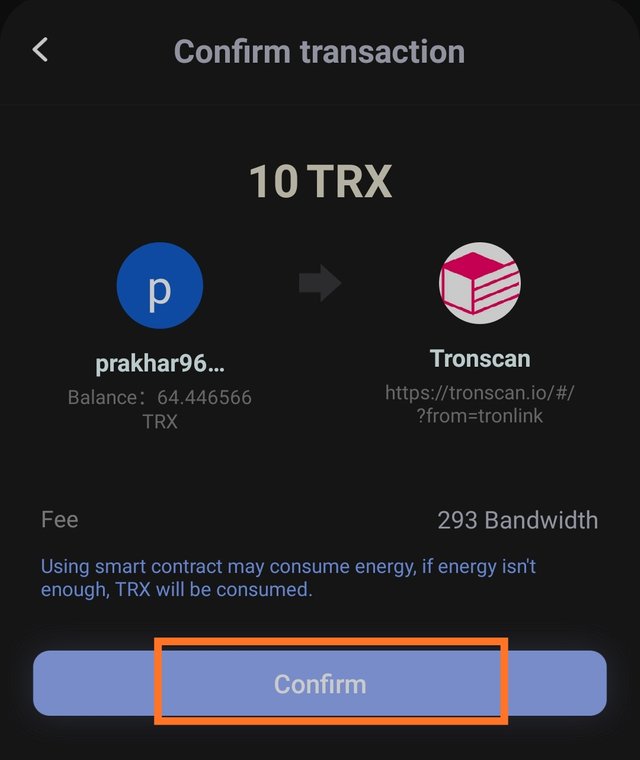
And this way, your votes will be casted and your votes will be in effect after the end of this round.
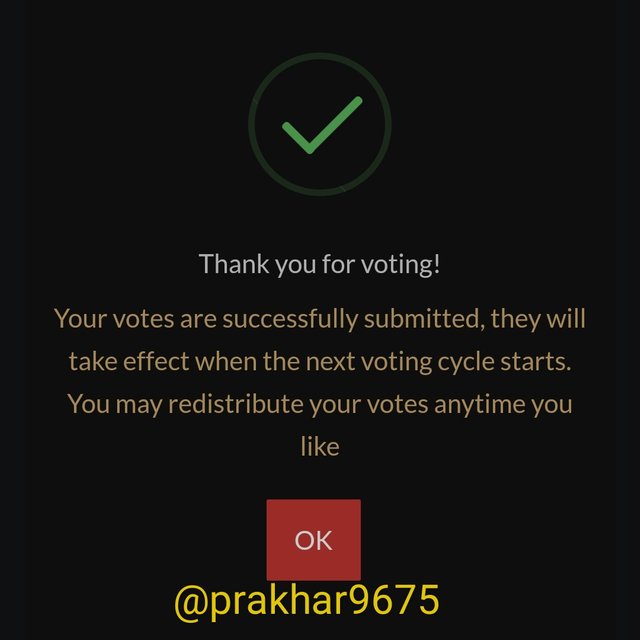

Conclusion
In this task, we discussed what is proof of stake and why it was used by many blockchain over proof of work. But as nothing is perfect, this also has some flaw. And then to overcome these flaws delegated proof of stake was introduced. It not only overcame the flaws of proof of stake but also introduced more decentralisation and democratic governance in the tron blockchain. Users having tron power cast vote to some block producers and then from those super representative and super representative partners are chosen and those producers who can't make it to the list are called super representative candidates.
Apart from this theoretical part, we practically learnt how can we stake our tron to earn tron power and then can utilise that tron power for casting vote to our favourite producer. This not only benefits the producer but also benefits voter.
In DPoS, the rate of validation of transactions is also very high this is why today a number of projects are adopting this consensus to make their projects to enable high speed validation and to increase scalability.

So that's all from my side, hope I was well understood.

Thank you
Cc
@yohan2on

.jpeg)
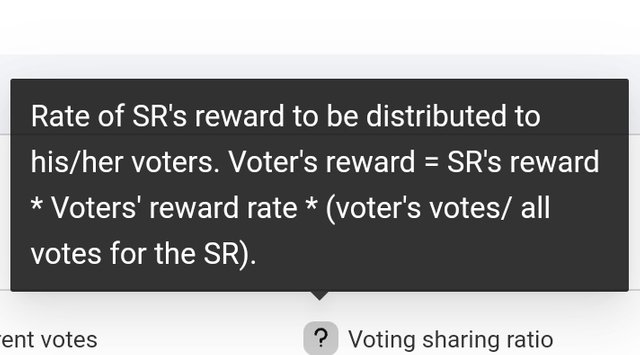
Hi @prakhar9675
Thanks for participating in the Steemit Crypto Academy
Feedback
Total| 8/10
This is good work. Thanks for taking the time to learn about the governance of the Tron ecosystem.
Downvoting a post can decrease pending rewards and make it less visible. Common reasons:
Submit